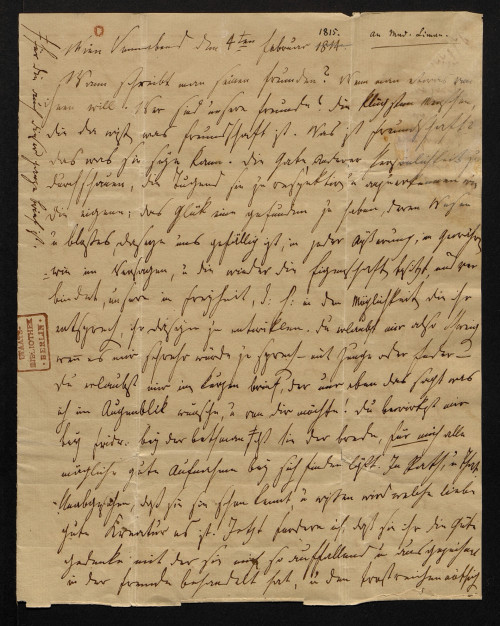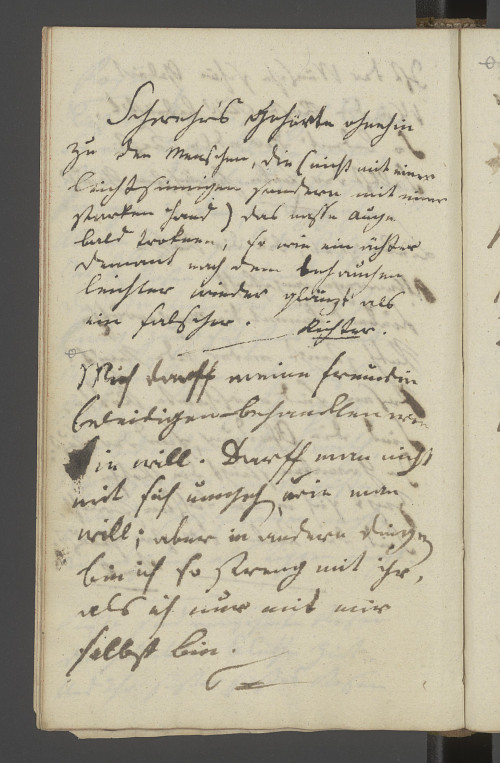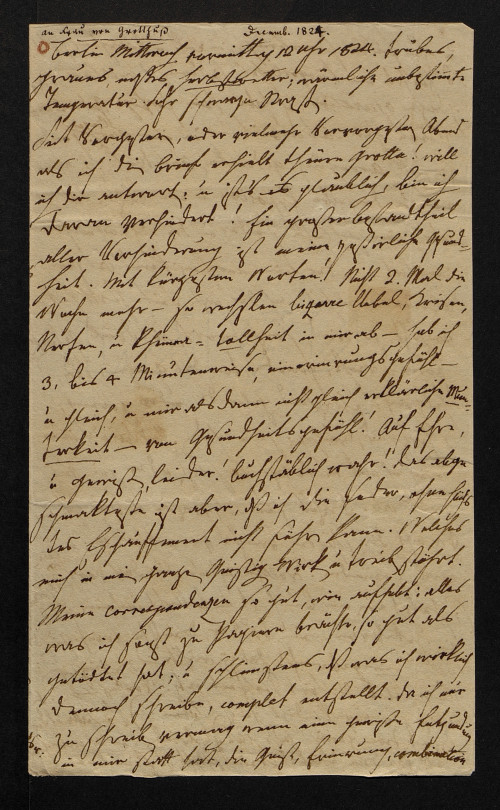2nd chapter: Rahel Levin Varnhagen’s Intimate Writing
Even as a young woman, Rahel Levin Varnhagen had a broad network of Jewish friends with whom she corresponded in several languages over longer periods of time, in part about personal relationships. When the talk turned to men, the focus was on questions of emancipation and on acculturation through baptism and marriage. The biographies of two women in particular reveal the tensions that Jewish women experienced as they navigated tradition and new beginnings, social expectations and self-determination: that of Fradchen Marcuse (1770 –1844), who entered into a marriage of convenience with a Jewish man at the age of 16, was baptized with him in 1809, adopted the name Liepmann/Liman and divorced him just one year later; and that of Sara Meyer (1763–1828), who divorced her first husband, Jacob Isaac Wulff, in 1788, converted just afterwards and took on the name Sophie von Grotthuss upon remarrying. Like Levin Varnhagen, Liman (mostly called “Franz” by Levin Varnhagen) and Grotthuss (“Sara” or “Grotta”) tested the boundaries of social norms. After her divorce, Liman rejected the idea of a marriage of love and chose a model of life and love with other women. For her part, Grotthuss sought self-fulfillment as a writer; Levin Varnhagen provided the two women with advice, comfort and intellectual stimulation. In her letters and diary entries, her thoughts constantly revolved around the practice and philosophy of friendship. The goal of this work on the concept of friendship was not least to instill in her female friends a common understanding of the practice of friendship. At times this took the form of networking and services of friendship to other women (Liman); at others, it manifested itself — in the sense understanding of the basic conditions and extremes of human existence (Grotthuss).
Weitere Stationen
-

Rahel Levin Varnhagen (1771 – 1833), Brief an Fradchen Liepmann / Friederike Liman (1770 –1844) in Berlin, Wien, 4. Februar 1815
2 Seiten (faksimiliert), 23,3 x 18 cm Sammlung Varnhagen, Biblioteka Jagiellońska, Krakau
-

Rahel Levin Varnhagen (1771 – 1833), „Tagebuch A“, nicht nummeriert, [1806]
1 Doppelseite (faksimiliert), 17,5 x 10,5 cm Sammlung Varnhagen, Biblioteka Jagiellońska, Krakau
-

Rahel Levin Varnhagen (1771 – 1833), Brief an Sara Meyer Wulff / Sophie von Grotthuß (1763–1828) in Oranienburg, Berlin, 15. Dezember 1824
2 Einzelseiten, 1 Doppelseite (faksimiliert), 21 x 12,5 cm, Sammlung Varnhagen, Biblioteka Jagiellońska, Krakau